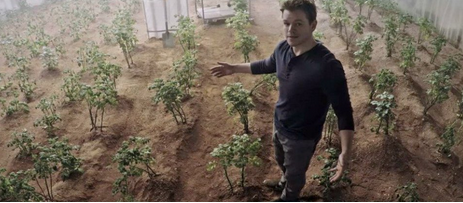科学家发现让植物快速生长的基因

澳大利亚科学家已经找到了一种基因,能使本地烟草植物在不可思议的短时间内繁殖生长,并且是在干旱的沙漠生长环境。
如果应用到其他植物上,这个基因可能是植物在太空恶劣环境生存并快速生长的关键,比如国际空间站,甚至火星上的封闭栖息地。“为了繁衍生息,该植物已经解决了干旱这个首要致命因素。” 昆士兰科技大学的首席研究员Julia Bally说。
研究中的本地烟草植物指的是本氏烟,当地部落称之为Pitjuri。通过观察化石记录,科学家发现它在澳大利亚严酷的气候下茁壮成长了750,000年左右。
该植物还具有独特的能力,能接收来自其他物种和病毒的基因而不排斥,堪称完美的“实验鼠”。出于这点原因,它已被实验室用于基因检测数十年之久,作为一个模式植物用以测试病毒和疫苗。
在整段时间里,科学家们一直不明白该植物能容纳新型基因的原因。不过昆士兰科技大学的研究人员终于找到了答案——有趣的是,这正是长久以来帮助植物幸存于澳大利亚恶劣环境的基因。
研究成果已发表在《自然植物》上,研究人员描述道,在Pitjuri中发现了一个彻底消除其对抗病原体的能力的插入基因。这个基因似乎关闭了植物抵抗入侵的欲望,这听起来不是好事。但这意味着植物能够集中所有能量在短时间内疯狂生长。
“该植物失去了‘免疫系统’,即使少量降雨,也能集中精力于快速地萌发、生长、开花和结果。” Bally说。“重点是开小花结大种子,并将这些种子及时放回土壤等待下一场雨。我们的发现可能对未来的植物生物技术研究有很大的影响。”
据研究小组介绍,失去免疫系统对于地球上的农作物来说并非益事。在普通的农场或种植园中,这些植物会立即被病原体感染。不过在无菌环境下是理想的,比如实验室和太空等。
研究者之一Peter Waterhouse说:“最近的《火星人》电影里面,搁浅在火星上的宇航员在人工栖息地种植土豆,这比起小说和人们幻想的更具有一些科学事实。”
目前,科学家正在国际空间站上进行种植农作物实验。2015年8月份,宇航员第一次品尝了太空生长的莴苣。然而,他们正在研究调试波长,可以用来触发光合作用,促进植物生长。
了解该基因的序列早晚能排上用场,因为研究人员现在能够在其他植物上对基因扫描,这将使他们能够检测出植物快速增长的潜力,也能在实验室试验中被利用。
在将来,如果科学家可以将Pitjuri的基因突变插入到其他作物,那么将实现迅速提高产量,在到达太空几天后就能向宇航员供给新鲜食物。
在该基因被整合到其他物种前还有很多工作要做,同时也要面临人们对转基因食品作物存在异议的问题。但是我们认为,如果这是能让植物在火星快速生长并供给移民群体的唯一的选择,也许会有更少的反对。让我们拭目以待吧。(来源:生物360)
The extremophile Nicotiana benthamiana has traded viral defence for early vigour
Abstract A single lineage of Nicotiana benthamiana is widely used as a model plant1 and has been instrumental in making revolutionary discoveries about RNA interference (RNAi), viral defence and vaccine production. It is peerless in its susceptibility to viruses and its amenability in transiently expressing transgenes2,3. These unparalleled characteristics have been associated both positively and negatively with a disruptive insertion in the RNA-dependent RNA polymerase 1 gene, Rdr14–6. For a plant so routinely used in research, the origin, diversity and evolution of the species, and the basis of its unusual abilities, have been relatively unexplored. Here, by comparison with wild accessions from across the spectrum of the species’ natural distribution, we show that the laboratory strain of N. benthamiana is an extremophile originating from a population that has retained a mutation in Rdr1 for ~0.8 Myr and thereby traded its defence capacity for early vigour and survival in the extreme habitat of central Australia. Reconstituting Rdr1 activity in this isolate provided protection. Silencing the functional allele in a wild strain rendered it hypersusceptible and was associated with a doubling of seed size and enhanced early growth rate. These findings open the way to a deeper understanding of the delicate balance between protection and vigour.
原文链接:http://www.nature.com/articles/nplants2015165

